Caleb Jamel Brown
August 21, 2025
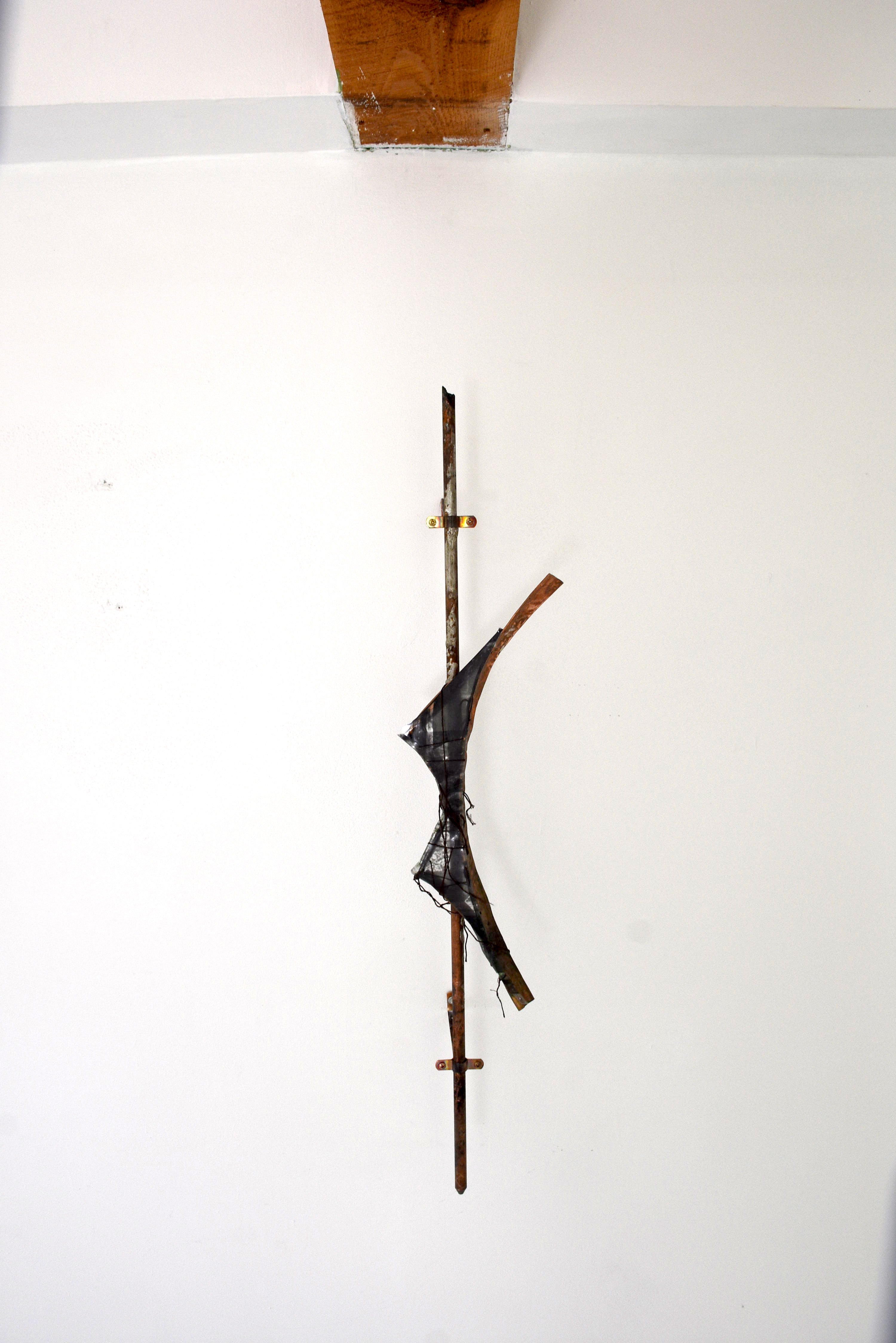
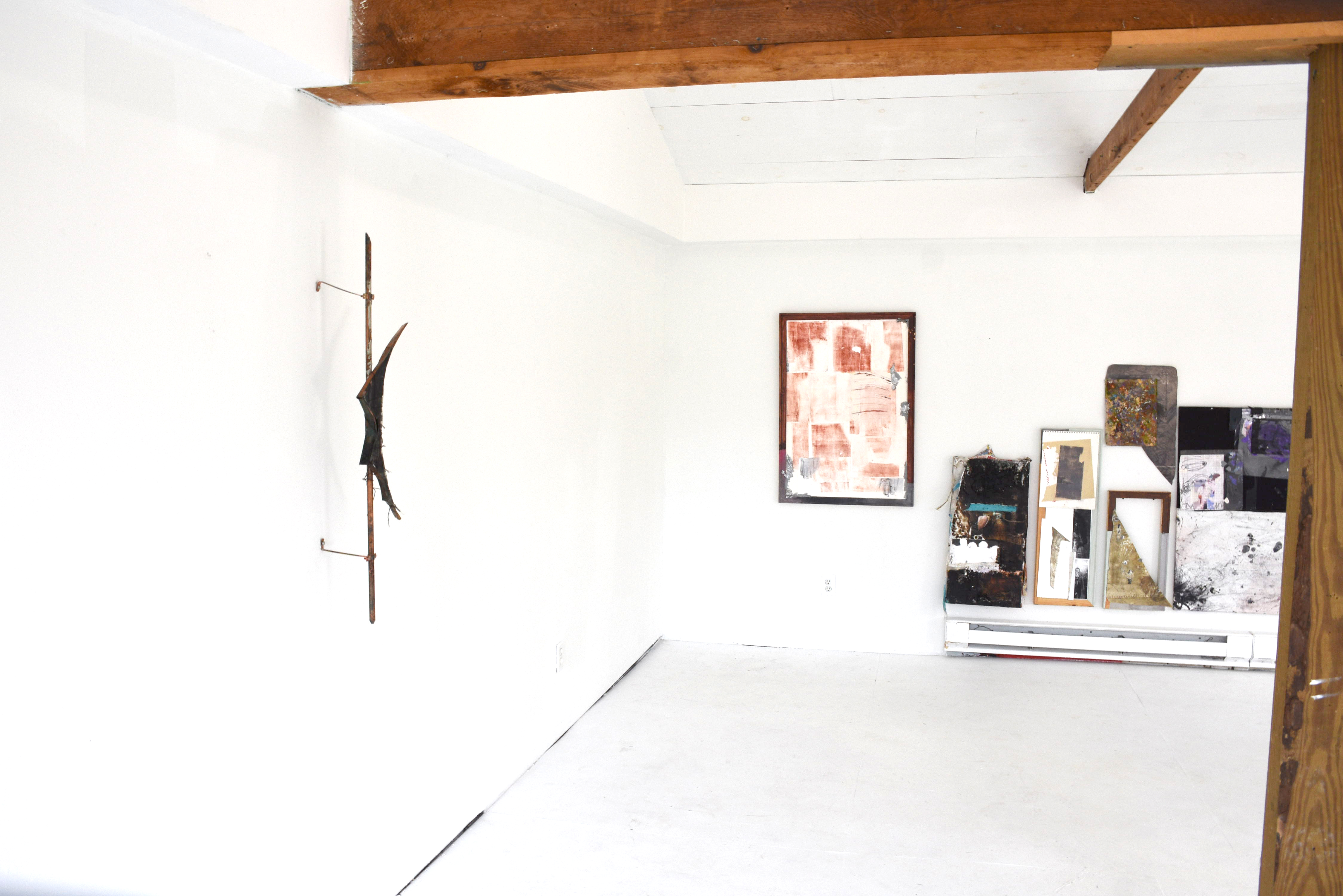
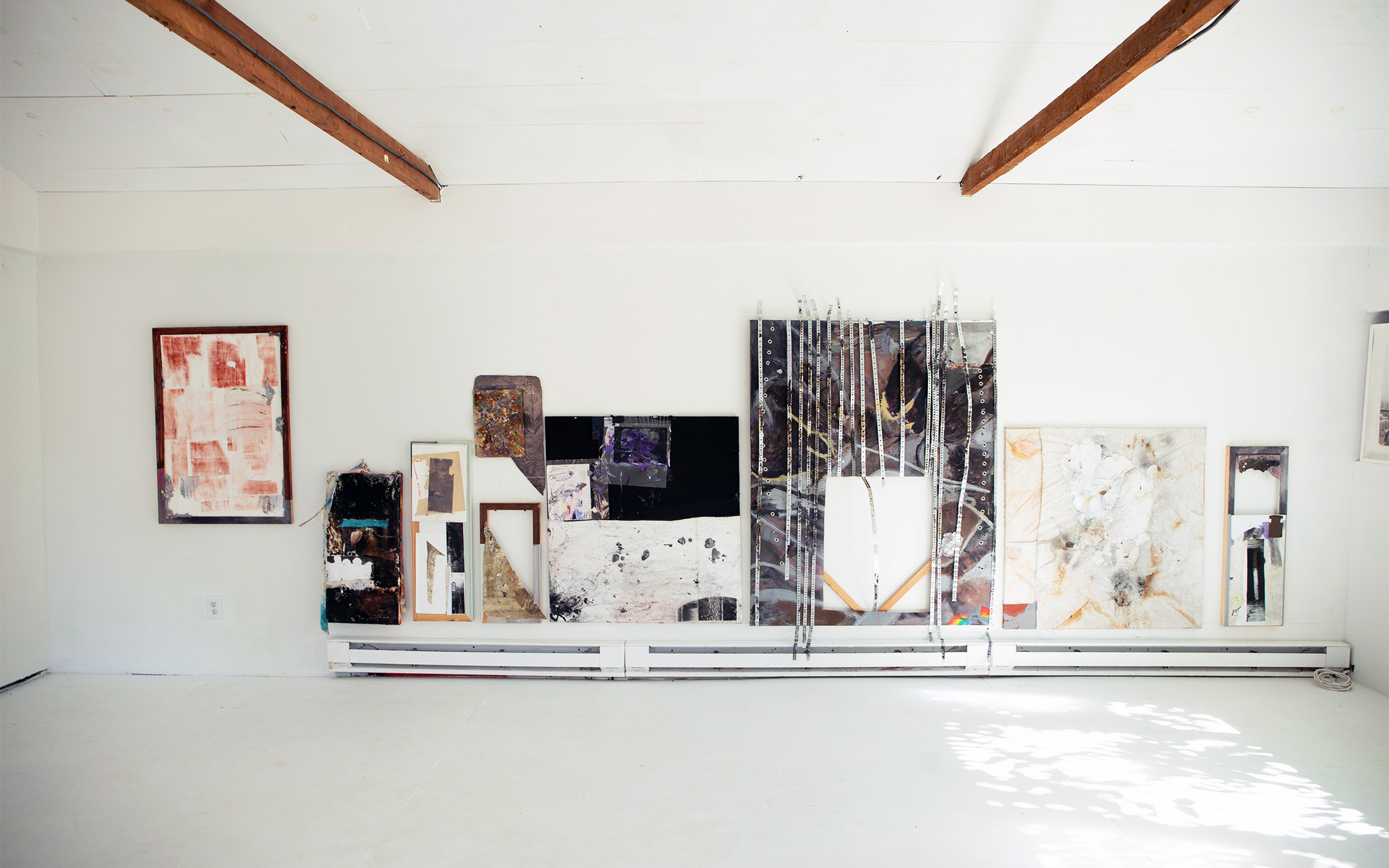
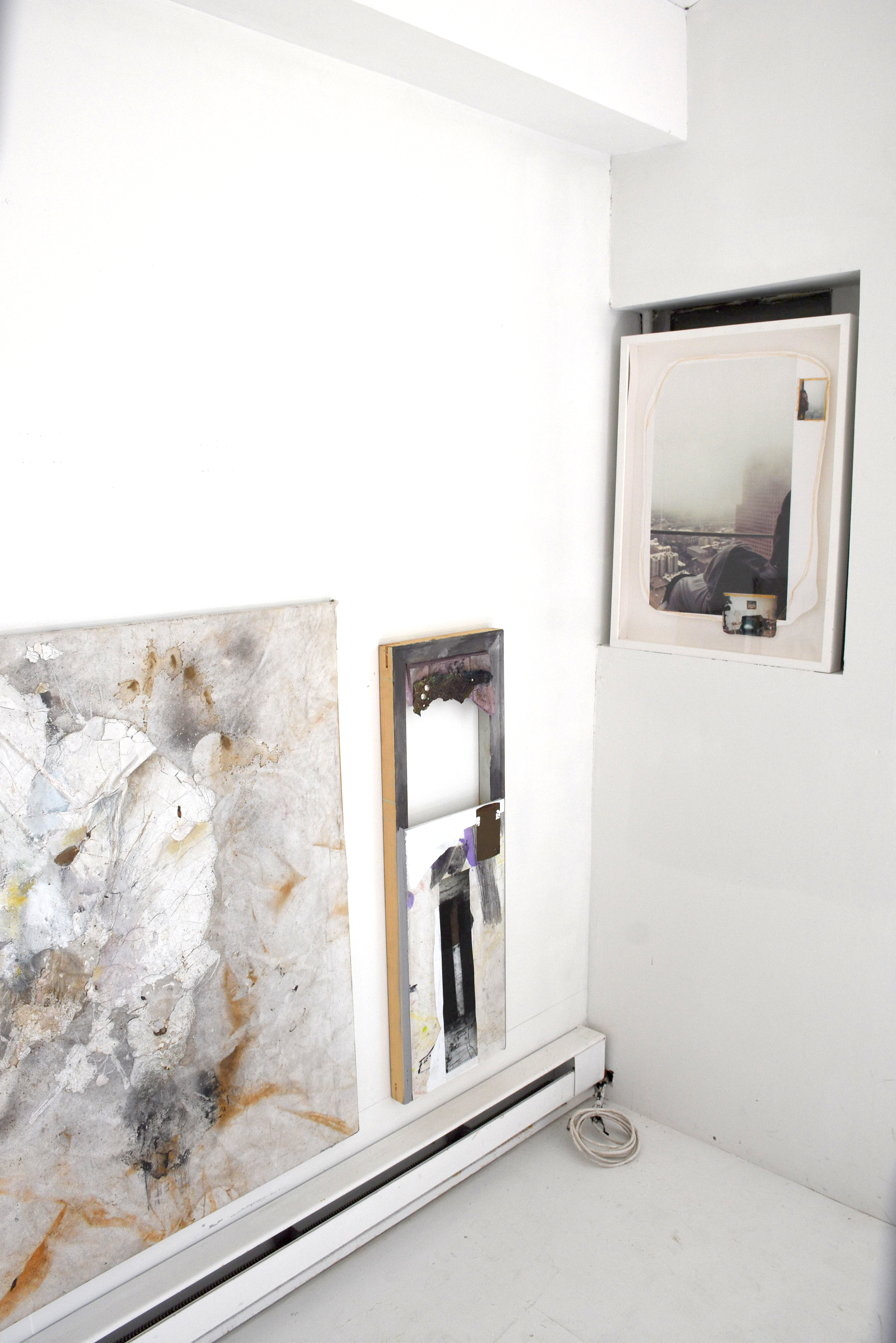
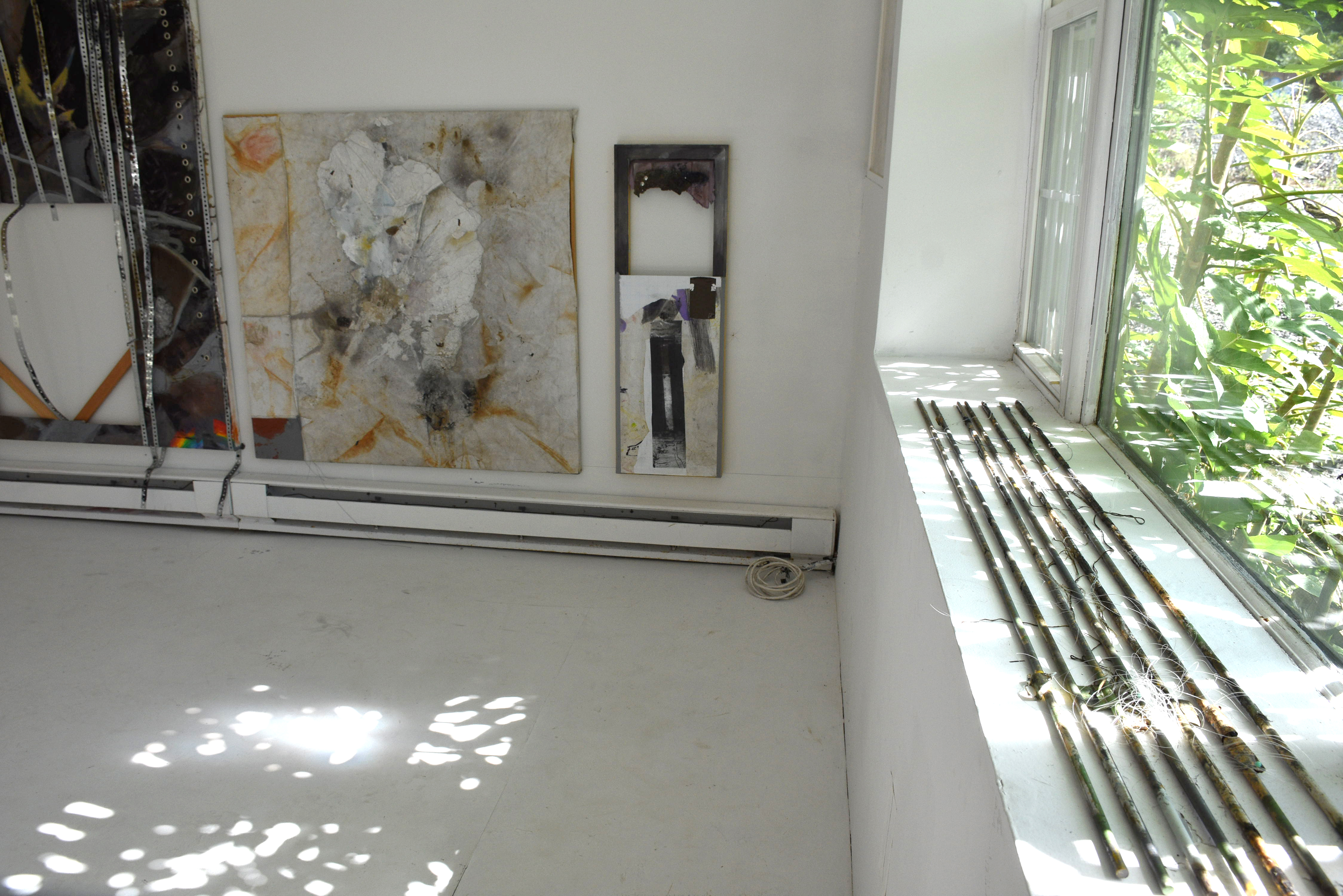


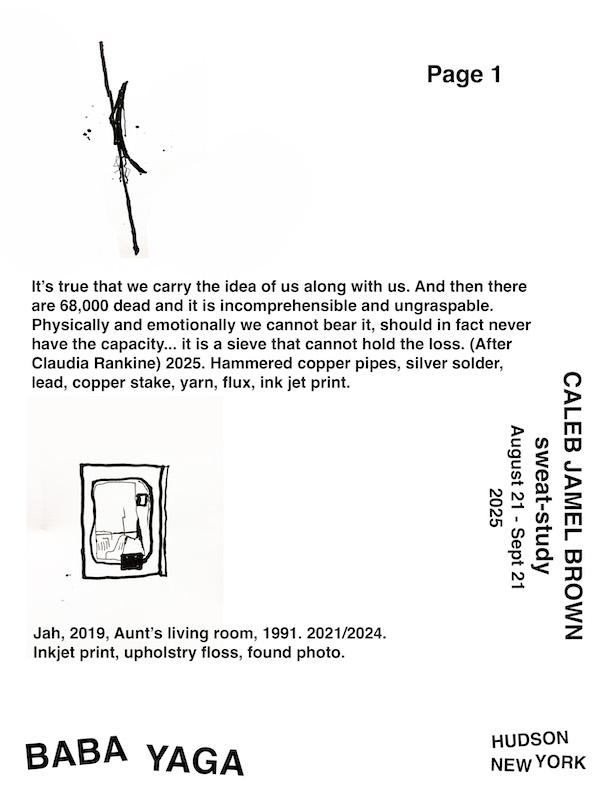
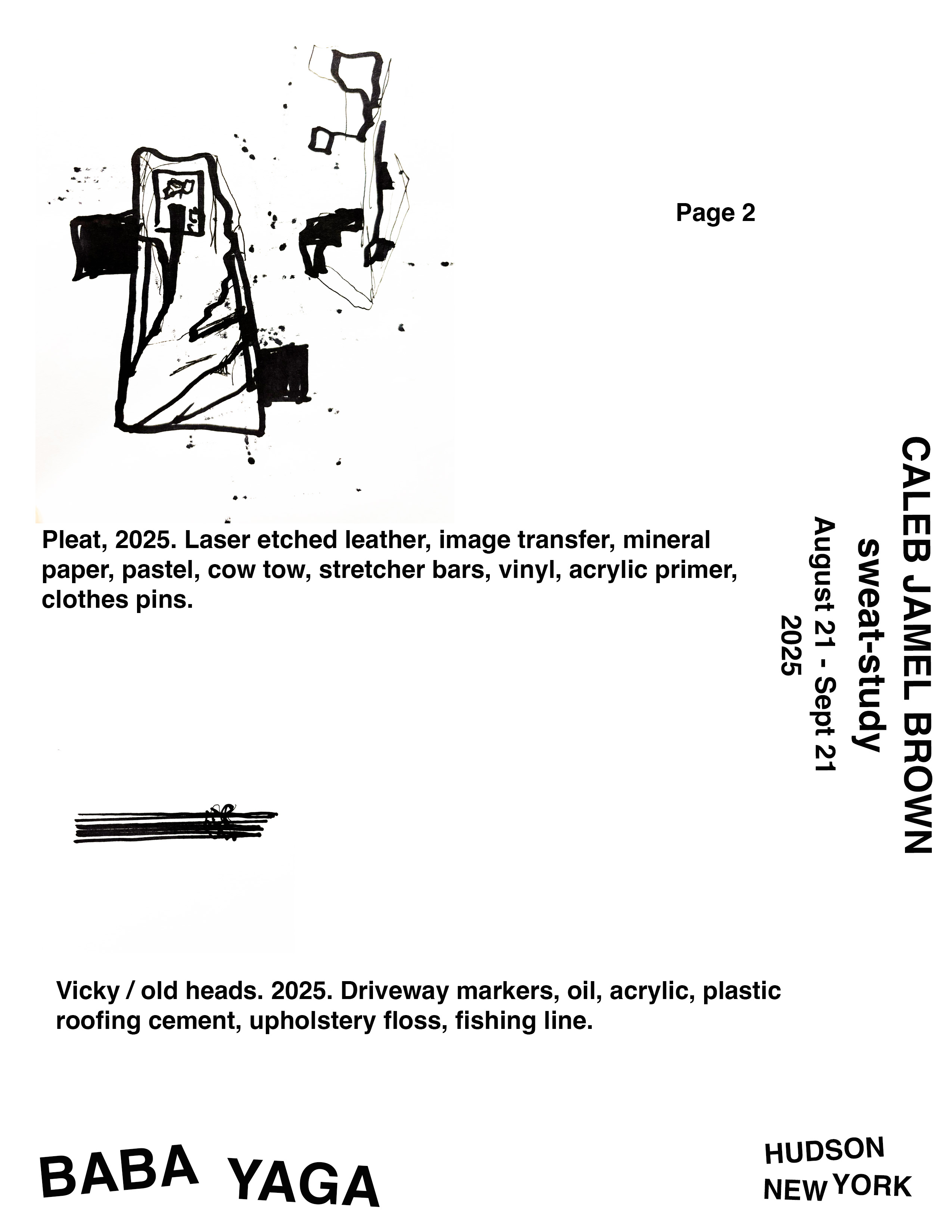
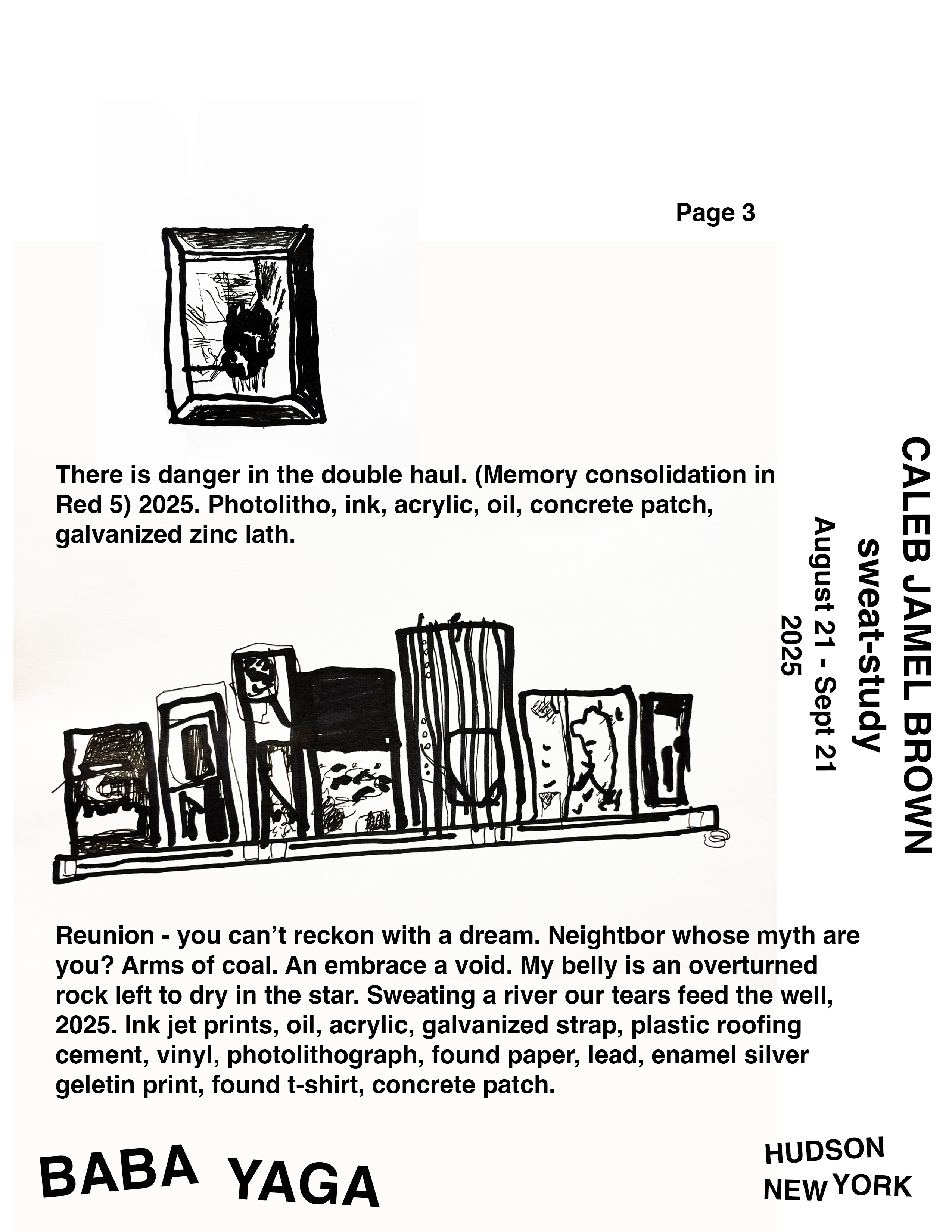
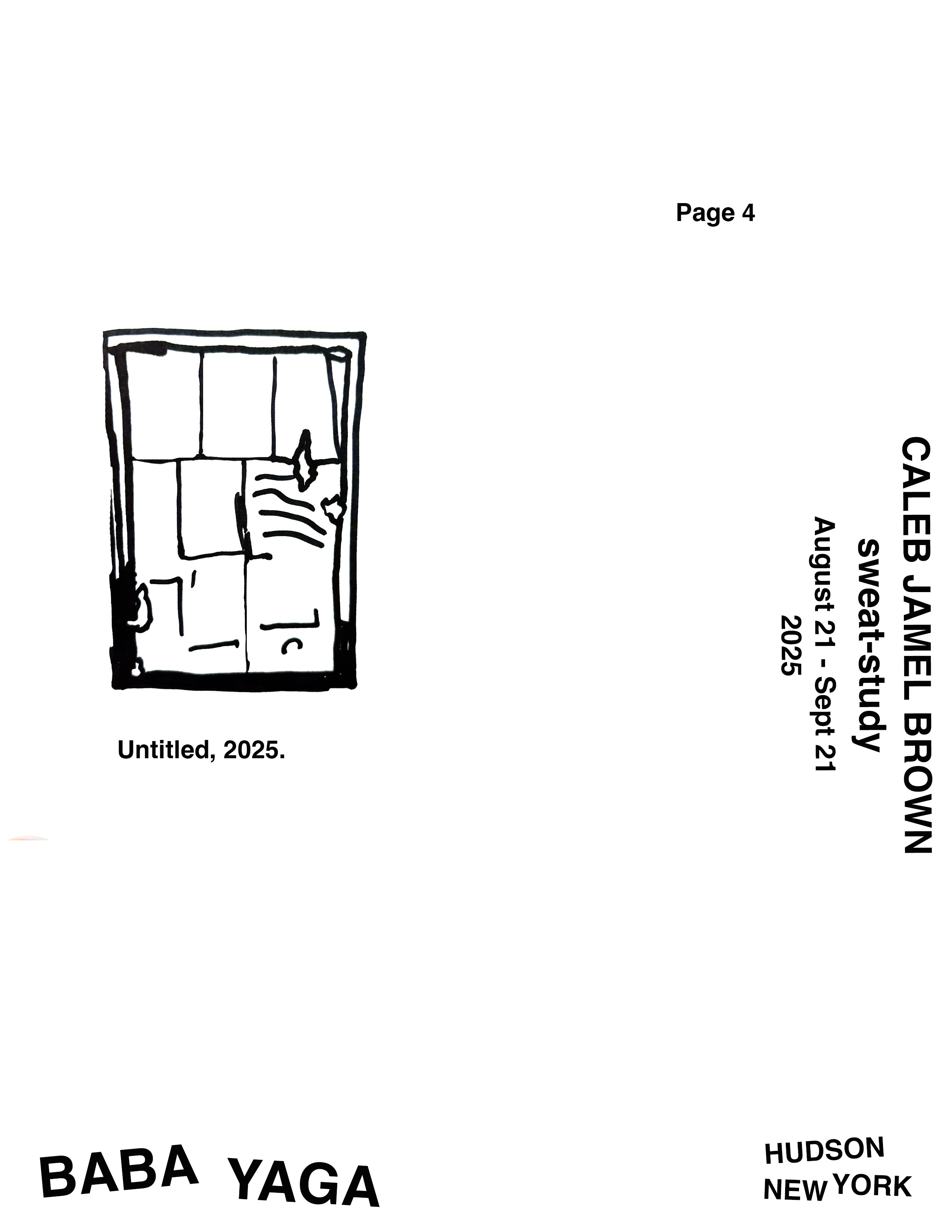
This text is in progress and edits will be made over the course of Caleb's exhibition:
Caleb’s work is rooted in the tradition of Black Southern assemblage, a legacy he redefines and expands upon. With a background in photography and an output that is categorically sculptural, Caleb brings a vortex of materials and associations to every object he produces. In a single work we can find examples of sewing, photography, painting, even aspects of plumbing and pipefitting. A photo-lithograph of a dilapidated house in an overgrown forest may be printed and sewed onto laser etched leather, adhered to stretcher bars, painted on, and then fused with copper pipes, some of which are hammered down, flattened, eyelets hammered in. Paint might then be applied while wet, or used as a material like any other, dried first and then applied sculpturally to the work “Jack-Whitten-Style.” Note that the act of sewing in the context of this work bears an association to Alabama’s Gee’s Bend quilters (Caleb has visited Gee’s Bend in person) whereas his use of copper pipes is both pragmatic and autobiographical; by trade, Caleb is a plumber. Materials like Oakum, a fiber sometimes mixed with molten lead to seal old cast iron pipes, finds its way into the work. Caleb saves the over-pours. Flux, a material that allows solder to flow, is intentionally left on pieces of copper, creating a green patina as it oxidizes the metal. He mentions objects like a “vintage cow toe” he found in York, Alabama, and describes his work as a fusion of movement and creation, traveling being “part of how the work comes together, hauling material.” The resulting works are aware of their past, cognizant of their current state, and projecting substance into the future, all at once.
Caleb’s installation at Baba Yaga is called sweat-study. He speaks of sweating’s relationship to privacy, the idea that it’s something preferably done at a distance, “gross but necessary,” possibly like making art. He mentions the idea that “you get a little nervous and start sweating, and then you get even more nervous because you’re sweating…” The parallel to his production method seems evident here. Caleb’s work is usually made in a studio environment where a multitude of works are simultaneously fermenting, bubbling over, being added to, subtracted from, recombined or, tellingly, literally brought outside to absorb the energy of the weather. These objects accumulate more and more material naturally over the course of their production, collapsing time upon their eventual completion. The non-linear aspect of the work is central to it, and sometimes the process can take years. Caleb’s approach is a form of abstraction that lacks adequate language to describe. He’s planting wildflowers, “not trying to illustrate something.” He points out that he’s specifically not creating images, but is interested in how the object interacts with people on a physical level. The artist imagines this show as an EP: not a single and also not an album, an EP is something in between. Every track (or artwork) is important, but there are only a handful of them, and when taken together and read left to right, their titles constitute a poem.
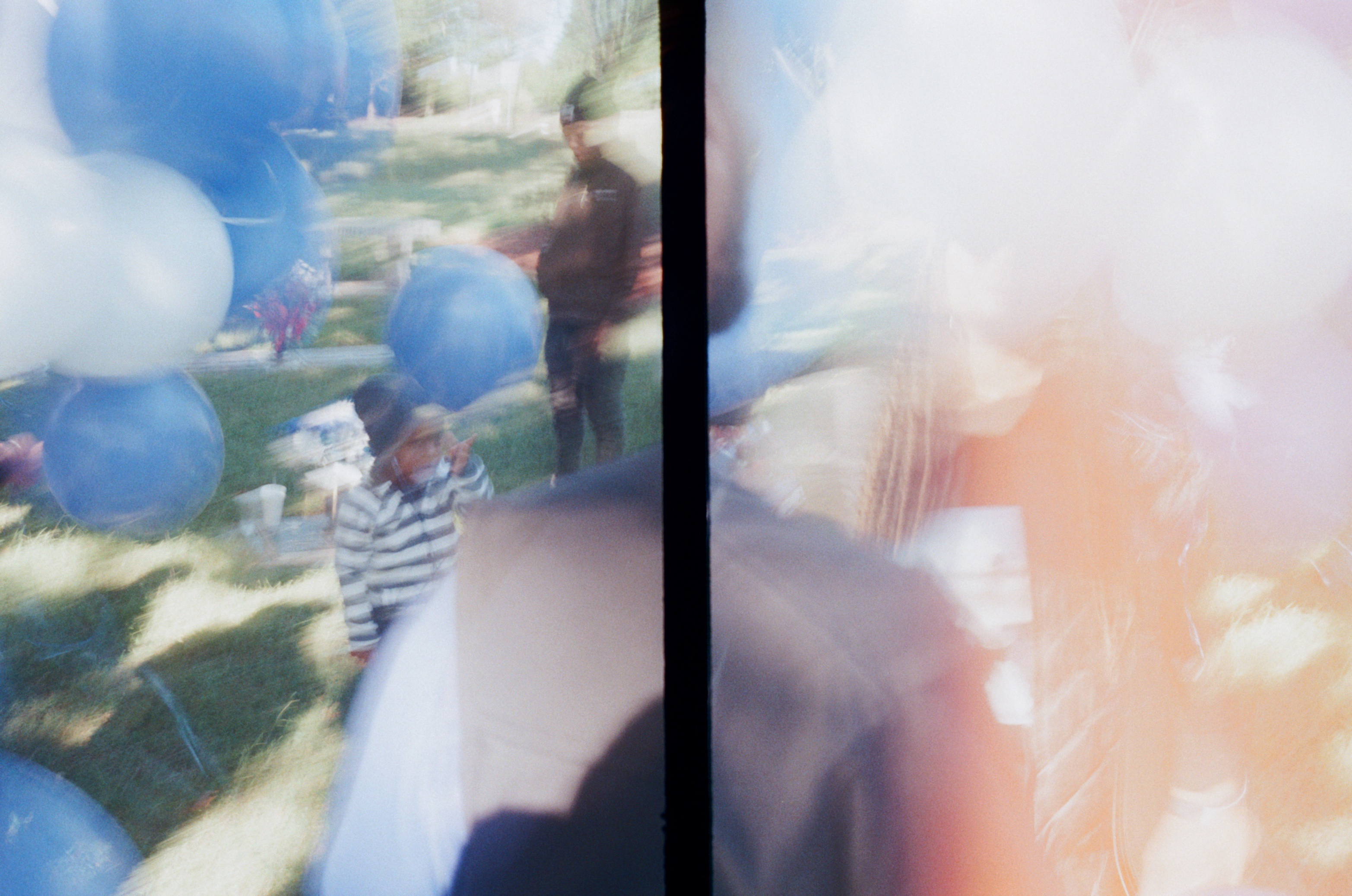
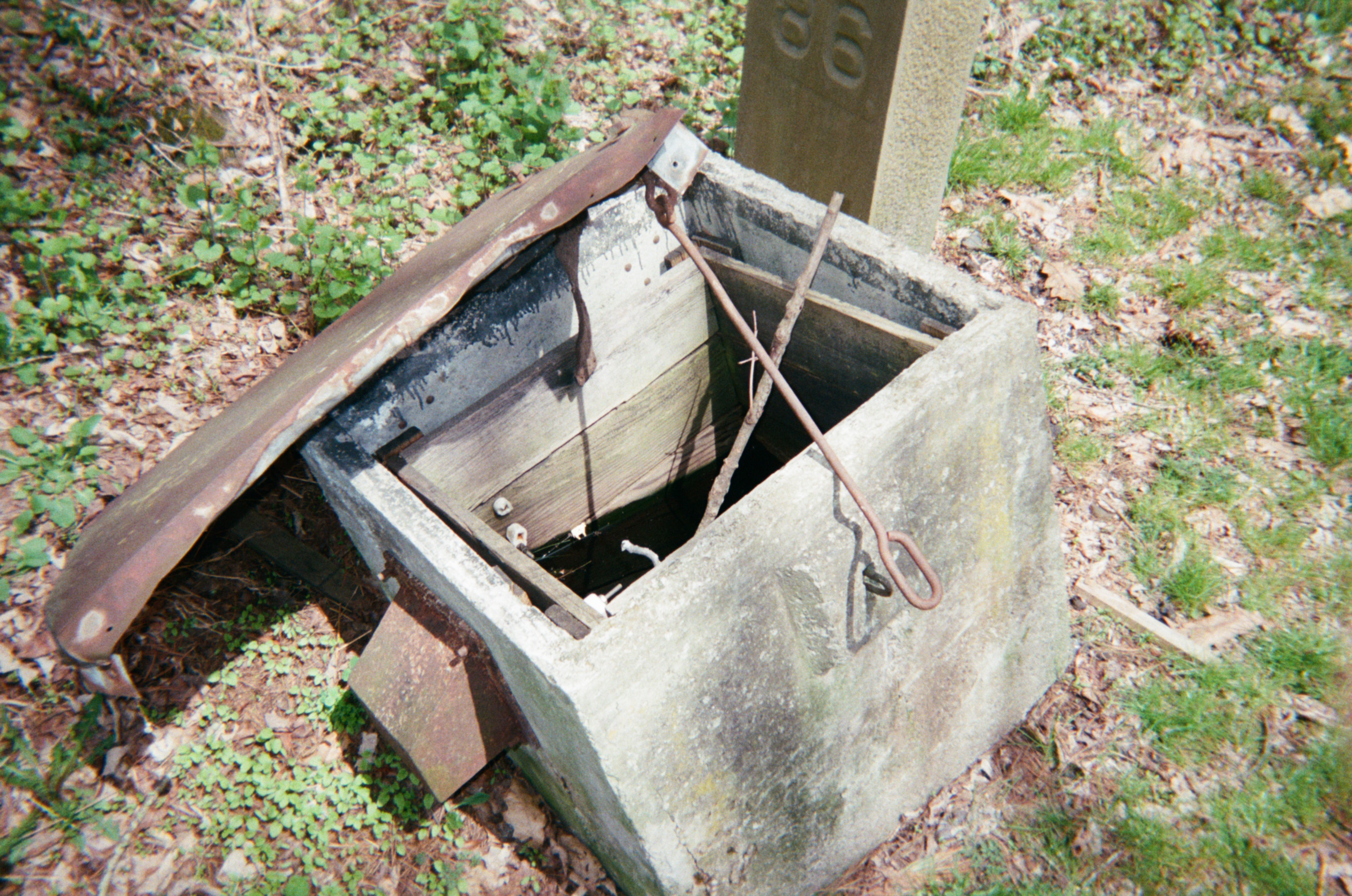
Caleb Jamel Brown (b.1993) is an interdisciplinary artist and plumber from Atlanta, GA, Currently based in Bedstuy. The Utilization of abstraction and vernacular as the foundation for larger cultural narratives is at the core of Brown’s practice, often working with photography, installation, printmaking, sculpture, painting, and video. His obsession with intersections of Black American material culture, representation through abstraction, clothes, visual vernacular, hand-me-down garments, knick-knacks, and kitschy décor. Give much of Brown’s work a devotional quality where the past and lives of elders are preserved and celebrated through objects and artifacts.
Caleb is a 2022 Working Artist Project recipient and a 2020 Mint Leap Year Fellow. Caleb holds a BFA from Valdosta State University and has participated in residencies throughout the United States and abroad including Shandaken: StormKing, New Windsor, NY; Mass MOCA; PATA, Lodz, Poland; Proyecto Ace, Buenos Aires, Argentina; Coleman Arts Center, York, Al; Aviario, Portugal.